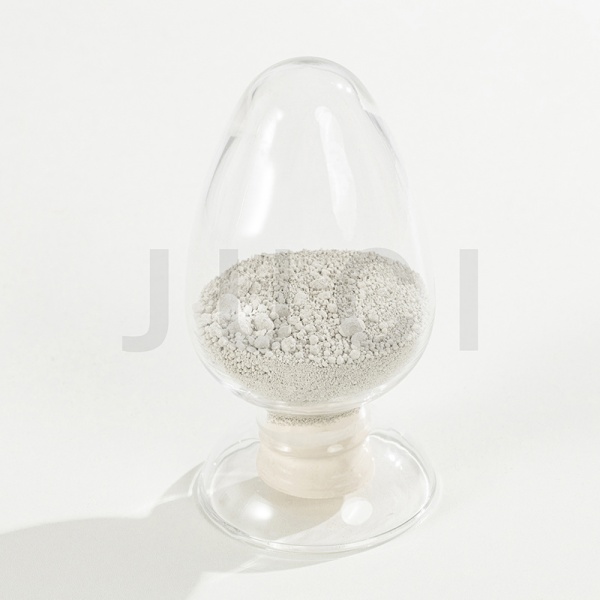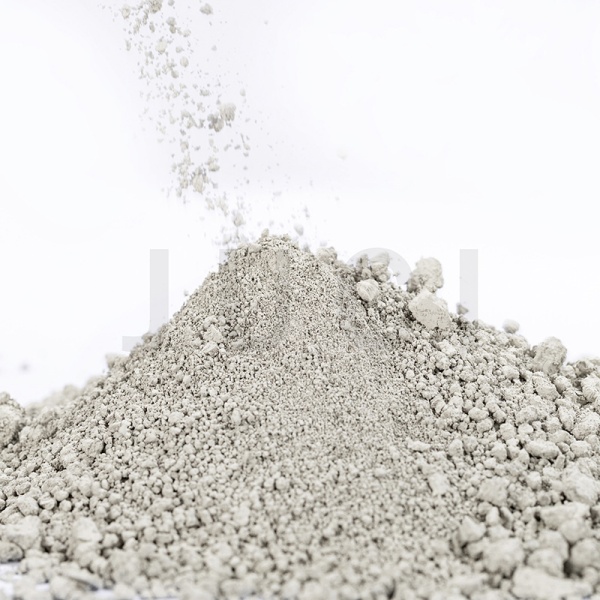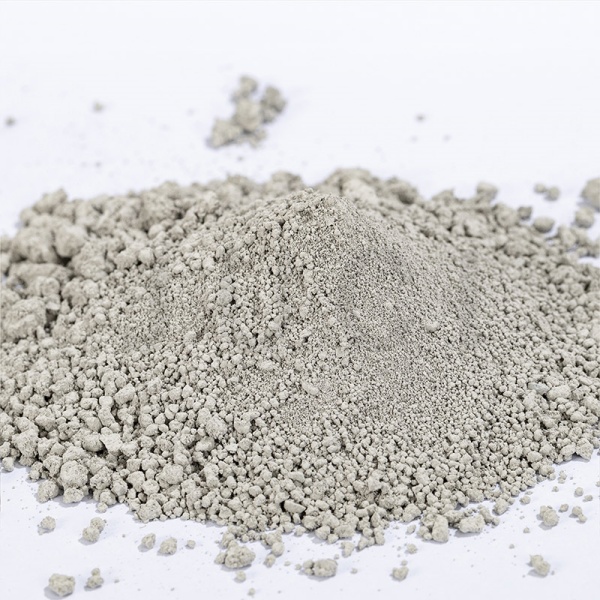



電子製品とそのデバイスの小型化と高集積化に伴い、放熱の問題は電子技術の発展を制限する重要なボトルネックとなっており、放熱効果を決定する熱伝導性複合材料などの熱伝導性界面材料への注目が高まっています。
現在、市販の熱伝導性複合材料は、一般的に有機材料と熱伝導性フィラーの複合材料から作られています。有機材料の熱伝導率は非常に低く、一般的に0.5W/mK未満であるため、熱伝導性複合材料の熱伝導率は主に熱伝導性フィラーによって決定されます。
一般的なポリマーマトリックスと熱伝導性フィラーの熱伝導率市場で最も広く使用されているフィラーは、酸化物フィラーであり、 アルミナ しかし、アルミナの固有の熱伝導率は38~42W/mKに過ぎず、将来の市場需要を満たす熱伝導性複合材料を調製することが非常に困難であるという制限がある。 放熱材料.
一方、AlNの理論熱伝導率は320W/mKと高く、熱膨張係数が小さく、絶縁性に優れ、誘電率が低く、シリコンの膨張係数と一致するなど優れた特性を持っているため、AlNを用いた熱伝導性複合材料の作製が期待されています。 AlN粉末 近年、充填剤として非常に需要が高まっています。

重要な問題を解決しなければならない
窒化アルミニウムの総合的な性能は、アルミナ、酸化ベリリウム、炭化ケイ素よりもはるかに優れており、高集積半導体基板や電子デバイスパッケージングの理想的な材料と考えられていますが、不快な点もあります。つまり、空気中の水分を吸収しやすく、加水分解反応が発生し、コーティングの表面でアルミニウム水酸化物膜層が形成され、熱伝導経路が遮断されてフォノン透過が影響を受けます。また、充填量が多いとポリマーの粘度が大幅に上昇し、成形加工に不利になります。充填量が多いとポリマーの粘度が大幅に上昇し、成形プロセスに不利になります。
上記の問題を克服するためには、熱伝導性粒子の表面改質により、両者の界面結合を強化することが必要である。現在、無機粒子の表面改質には主に2つの方法がある。1つは表面化学反応法、すなわちカップリング剤などの小分子を無機粒子表面に吸着または反応させる方法である。もう1つは表面グラフト化法、すなわちポリマーモノマーと無機粒子表面の水酸基とのグラフト反応である。
現在、シランカップリング剤やチタン酸カップリング剤などのカップリング剤による表面改質や、その他の表面処理剤が一般的に使用されています。表面グラフト化は、様々な特性評価のニーズに基づいて条件を満たすモノマーとグラフト反応プロセスを選択できるため、表面化学反応法よりも柔軟性に優れています。

粒子サイズと形状が熱伝導性材料に与える影響
窒化アルミニウムの粒子サイズがポリマー複合材料の熱伝導率に与える影響は、主に2つの側面で現れます。一方では、大きな粒子径のフィラーの比表面積が小さいほど、それが形成する界面層の面積が小さくなり、つまり界面熱抵抗が小さくなるため、理論上はより高い熱伝導率が得られます。一方、小さな粒子径のフィラーは積層密度が高いため、空隙を効果的に低減し、熱伝導率を向上させることができます。
これは矛盾ではないでしょうか?粒子サイズは大きい方が良いのでしょうか、それとも小さい方が良いのでしょうか?実際、 窒化アルミニウムフィラー 粒子径は大きすぎても小さすぎても良くありません。大きすぎると積層密度が低くなり、分布が不均一になり、熱伝導率が低下します。粒子径が小さすぎると界面が増加し、熱抵抗が生じます。また、粒子径の小さいフィラーが集まりやすくなり、システムの粘度が上昇し、ポリマー内にボイドが発生し、ポリマーの機械的特性と熱的特性が低下します。

そのため、粒子サイズは「大きすぎず小さすぎない」ことが求められますが、理想的な要件を満たすのは困難です。そこで、異なる粒子サイズの粒子を複合化するという良い方法が考えられました。異なるサイズの粒子を厳選し、フィラーとしてマトリックス材料に充填することで、大きな粒子が主要な熱伝導経路を構成し、小さな粒子が大きな粒子間の隙間を埋めることで、より豊かな熱伝導ネットワークを形成し、複合材料の熱伝導性を向上させるのです。
さまざまなサイズの 熱伝導性AlNフィラー 粒子の粒度分布図を再度示すと、フィラーの形状(ウィスカー状、繊維状、薄片状、球状)が材料の熱伝導率に及ぼす影響は、熱伝導経路の形成に大きく影響します。ウィスカー状>繊維状>薄片状>球状ですが、フィラー充填密度が高いほど球状フィラーの形成は大きくなり、粘度の急激な上昇を招きませんが、業界では最も広く使用されています。また、加工プロセスもポリマー熱伝導材料における窒化アルミニウムの適用効果に影響を与えます。これは、加工プロセスがマトリックス中のフィラーの分散と分布に影響を与えるためです。マトリックス中のフィラーの分散状態は、複合材料中の熱伝導経路の形成に影響を与え、複合材料の熱伝導率に影響を与えます。ポリマー複合材料の形態の違いにより、加工および成形方法は、溶液混合、粉末混合、溶融混合の3つの方法に分けられ、熱伝導率の向上への影響は、粉末混合>溶液混合>溶融混合の3つの特徴を示します。

厦門Juciテクノロジー株式会社について
厦門ジュチテクノロジー株式会社は、高性能の研究開発、生産、販売に特化したハイテク企業です。 窒化アルミニウム(AlN)材料. 有力者として AlNフィラーサプライヤー、私たちはプレミアムを提供することに特化しています 窒化アルミニウム放熱製品 電子機器、半導体、航空宇宙などの業界向けにカスタマイズされたソリューションを提供します。
当社の強みの一つは、AlNの加水分解問題を効果的に軽減し、優れた材料安定性と性能を確保することです。卓越した製品品質と顧客中心のサービスにより、厦門Juciは世界中のお客様から信頼を得ています。
メディア連絡先:
厦門ジュチテクノロジー株式会社
電話番号: +86 592 7080230
メールアドレス: miki_huang@chinajuci.com
Webサイト: www.jucialnglobal.com